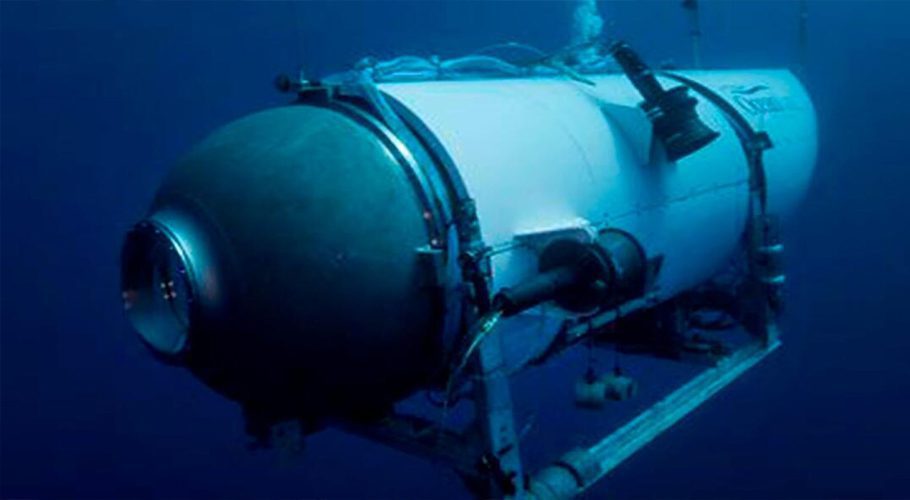It’s now a race against time to locate Titan and the submersible’s five-person crew, with two Pakistanis on board, who were on a mission to excavate the Titanic’s remains. The US Coast Guard claims that as of Tuesday morning at 1am, the submarine that vanished off the coast of Newfoundland on Sunday had only between 70 and 96 hours of emergency oxygen.
One pilot and four passengers were on board the submersible that went missing on Sunday. Although, the vessel could stay underwater for up to 96 hours, it was unclear if it had resurfaced but was unable to communicate.

Those aboard the submersible called Titan, the highlight of a tourist expedition that costs $250,000 per person, included British billionaire Hamish Harding and Pakistani businessman Shahzada Dawood with his son Suleman.

Titan, which weighs about 10,400 kg and is comprised of titanium and compact carbon fibre, sank on Sunday morning. It works by pinging the Polar Prince research vessel every fifteen minutes to let it know everything is okay. Approximately 1.45 hours into its dive, Titan lost contact. At the time, it was estimated that the Titan submarine was 1,450 kilometres (km) off Cape Cod.

According to Titan’s owner OceanGate Expeditions, the vessel had completed more than 50 test dives before the disaster on Sunday. Divers are taken on an eight-day excursion by Titan to see the renowned wreck, which is located at the bottom of the Atlantic at a depth of about 3,800m, or more than four times the height of the Burj Khalifa stacked together.
According to a Reuters report, the expedition, which costs $250,000 per person, starts in St. John’s, Newfoundland, before heading out approximately 400 miles into the Atlantic to the wreckage site.
OceanGate Expeditions said Titan is “outfitted with state-of-the-art lighting and sonar navigation systems plus internally and externally mounted 4K video and photographic equipment.”
Aside from taking researchers and divers to the wreck of the Titanic, “Titan is also used for site survey and inspection, research and data collection, film and media production, and deep sea testing of hardware and software.”
What’s the mission?
The Titanic Expedition is about conducting scientific and technological survey of the wreck with a mission to:
- Supplement the work done on previous scientific expeditions to capture data and images for the continued scientific study of the site.
- Document the condition of the wreck with high-definition photographs and video.
- Document the flora and fauna inhabiting the wreck site for comparison with data collected on prior scientific expeditions to better assess changes in the habitat and maritime heritage site.
Expeditions are conducted respectfully and in accordance with UNESCO guidelines for the preservation of underwater world heritage sites
OceanGate Expeditions charges guests $250,000 for a seat aboard Titan. The inaugural dive took place in 2021, according to the company’s website. Each expedition lasts eight days, according to OceanGate, and each dive is meant to include a scientific objective, including studying the wreck’s decay.
What is the Titan submersible?
The missing submersible, known as the Titan, is designed to take five people – one pilot and four crew members – to depths of about 13,100 feet, or nearly 4km.
The vessel has 96 hours of life support for five people. It’s about the size of a minivan, CBS correspondent David Pogue said after joining an expedition last year, and is steered using a video game controller.
It operates with a launch-and-recovery platform and, in the current expedition, was paired with the Canadian research vessel Polar Prince on the surface.
It should be noted that a submersible is different from a submarine in that it is supported by a surface vessel, platform, shore team or submarine.






































